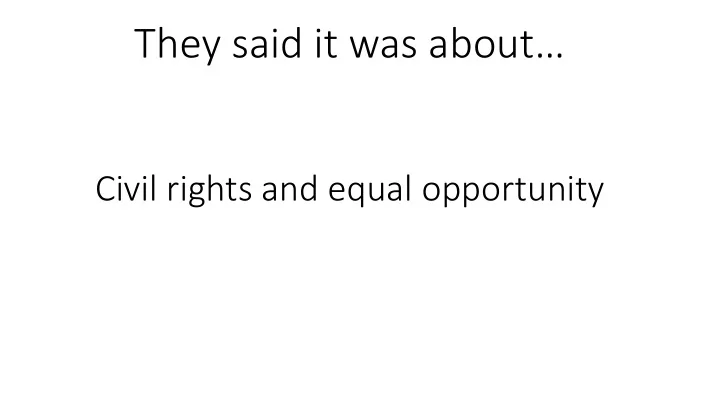

They said it was about… Civil rights and equal opportunity
They said it was about… Freeing up law enforcements time to enforce other laws
They said it was about… money for roads, schools and towns
They said it was about… Increased patient access to marijuana
They said it was about… Protecting our families
Hmm?
It was really about: Profits
It was really about: Big business
It was really about: Building a customer base For an addictive industry to increase profits
It was really about: Commercialization
It was really about: Big money and special interest groups
Today’s highly potent marijuana represents a growing and significant threat to public health and safety, a threat that is amplified by a new marijuana industry intent on profiting from heavy use.
YOUTH AND SCHOOL IMPACTS • While rates of almost every other drug are decreasing among youth, marijuana use remains stubbornly high. A new marijuana industry – teaming up with Big Pharma, Big Alcohol and Big Tobacco executives – is facilitating and encouraging this trend, presenting teens with new and appealing ways to ingest highly potent marijuana. According to the University of Michigan Monitoring the Future survey of American youth, between 2017 and 2018, the percentage of 8th and 10th graders who report “vaping” marijuana has increased 63%. Over the same timeframe, the percent of 12th graders who report vaping marijuana has increased by 53% (Johnston, Miech, Bachman, Schulenberg, & Patrick, 2018).
YOUTH IMPACTS • The percentage of youth aged 12-17 years old using marijuana is declining faster in states where marijuana is not “legal,” and overall use is up in “legal” states while declining in non -legal states. According to a uniform survey of marijuana use conducted by the federal government across all states, the percentage of youth aged 12-17-years- old using marijuana in states where marijuana is “legal” was 7.7%, versus 6.2% in non-legal states (NSDUH State Reports 2016-2017).
IMPACT ON SOCIAL JUSTICE • Marijuana proponents predicted that legalizing marijuana would meaningfully mitigate disparities in criminal enforcement and enhance social justice. Unfortunately, these predictions have been unrealized, as ethnic and racial disparities in law enforcement persist. • In Washington D.C., between 2015 and 2017 (the years immediately following legalization), although total marijuana-related arrests have gone down, distribution and public consumption arrests more than tripled. Among adults, 89% of marijuana distribution or public consumption arrestees were African American (DC Metropolitan Policy Department, 2018). Juvenile marijuana-related arrests increased 114% between the three years before and after marijuana legalization.
IMPACT ON SOCIAL JUSTICE • The 2017 marijuana-related African American arrest rate in Colorado is nearly twice that of Caucasians (233 in 100,000 versus 118 in 100,000) (Colorado Department of Public Safety, 2018). In Colorado, 39% of African American marijuanarelated arrests in 2017 were made without a warrant, while only 18% of Caucasians were arrested without one (Colorado Department of Public Safety, 2018). Drug suspension rates in Colorado schools with 76% or more students of color are over two times higher compared to Colorado schools with fewer than 25% students of color (Colorado Department of Public Safety, 2016). In Denver, the average number of annual Hispanic arrests for marijuana increased by 98% since legalization (107 average annual arrests pre-legalization vs 212.25 post- legalization); the average number of arrests for African Americans increased 100.3% from 82.5 per year to 165.25 per year (Colorado Department of Public Safety, 2018).
IMPACT ON SOCIAL JUSTICE • Across Colorado, minority juveniles suffered. The average number of marijuana-related arrests among Hispanic juveniles increased 7.3% (770/year to 825/year), and the average number of marijuana-related arrests among African-American juveniles increased 5.9% (230/year to 243.5/year) (Colorado Department of Public Safety, 2018).
STONED DRIVING • A recent roadside study of 2,355 drivers in Washington State found that, six months after introducing recreational sales of marijuana, the proportion of daytime drivers testing positive for THC (the hallucinogenic ingredient in marijuana) almost tripled from 8% to 23% (Eichelberger, 2019). • The percent of traffic fatalities that involved drivers intoxicated with marijuana in Colorado rose by 86% between 2013 and 2017, with over one-fifth of all traffic fatalities involving a driver testing positive for marijuana by 2017 (National Highway Traffic Safety Administration, 2006-2011; Colorado Department of Transportation, 2012-2017).
STONED DRIVING • 65% of Coloradan drivers testing positive for marijuana in 2017 combined marijuana with alcohol and/or other illicit drugs (National Highway Traffic Safety Administration, 2006-2011; Colorado Department of Transportation, 2012-2017) • Over 20% of 2018 DUI arrests in Colorado also involved testing positive for marijuana (Colorado Department of Transportation, 2017).
IMPACT ON THE WORKFORCE • Between 2013 and 2016, positive oral-fluid test results for recent marijuana use among the general U.S. workforce increased almost 75%, from 5.1 to 8.9 percent (Quest Diagnostics, 2017). [Figure 15] Increases in positive urine test results for marijuana in Washington and Colorado doubled the national average between 2015 and 2016. The rate of positive test results for marijuana use increased by 11% in Colorado and 9% in Washington, while the national rate increased only 4% (Quest Diagnostics, 2017).
IMPACT ON THE WORKFORCE • Between 2016 and 2017, positivity rates for marijuana in the workforce increased 43% in Nevada, 14% in Massachusetts, and 11% in California (Quest Diagnostics, 2017).
IMPACT ON THE WORKFORCE • Workforce marijuana- positivity rates in all “legal” states but one (Alaska) are above the national average. For example, 2018 positivity rates in Maine (5.0%), Oregon (4.3%), Nevada (4.0%), Massachusetts (3.3%), Colorado (3.0%), California (2.5%), and Washington (2.4%) are higher than the national average (2.3%) (Quest Diagnostics, 2019). Most states that have legalized marijuana show an increasing trend in positivity rates.
Recommend
More recommend